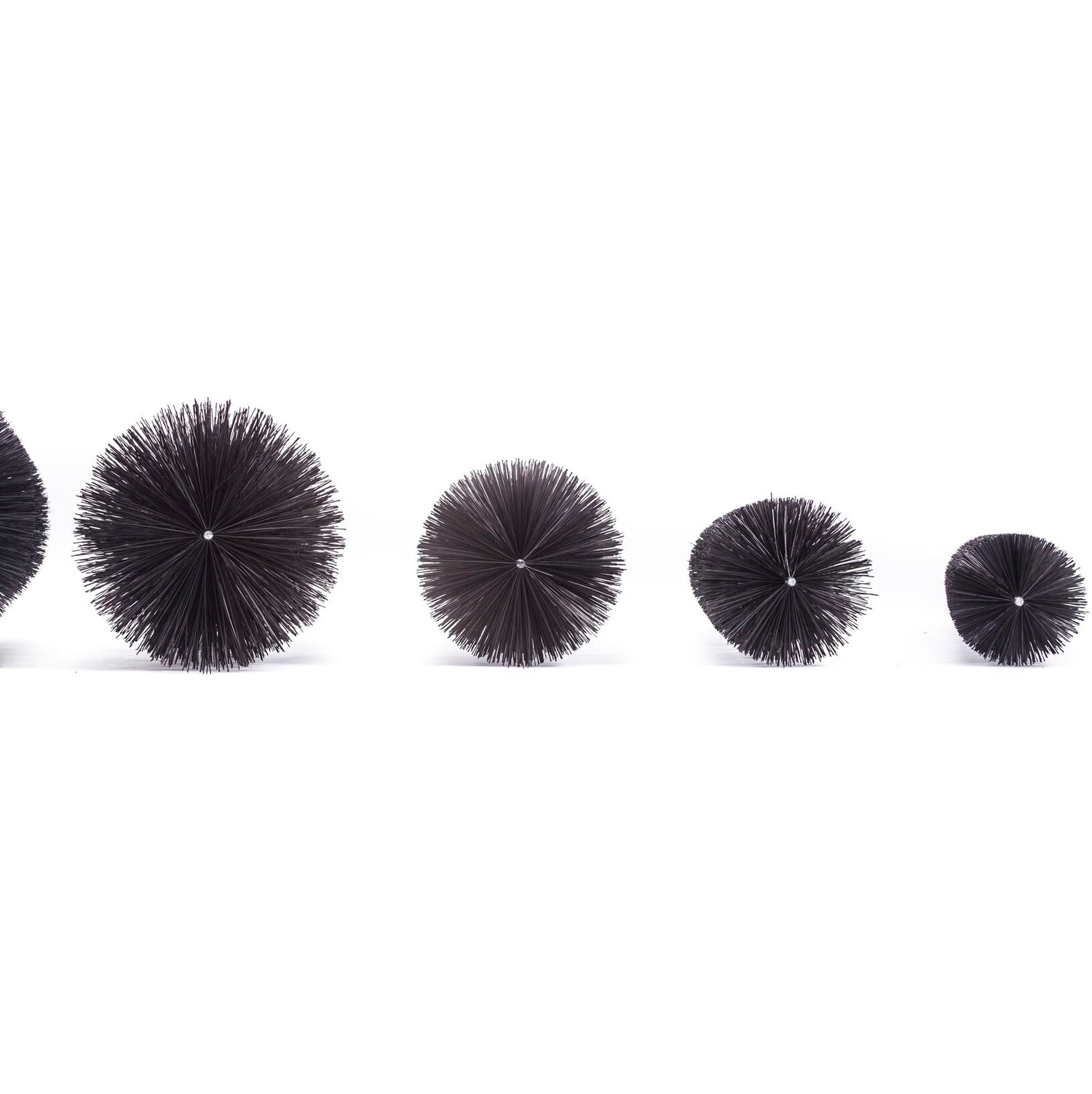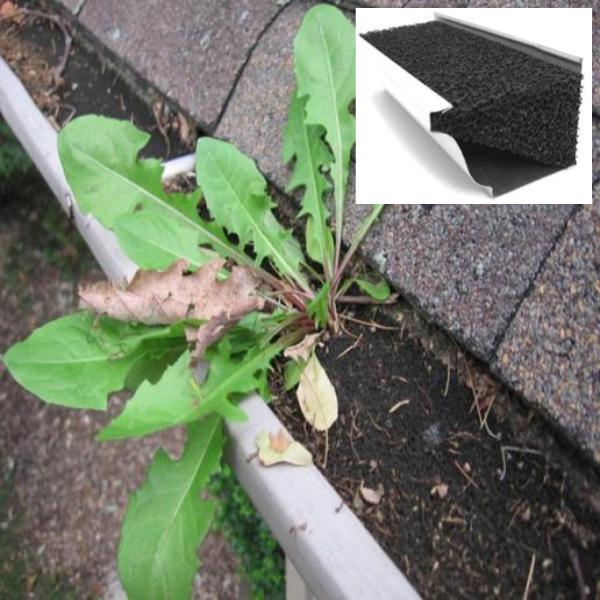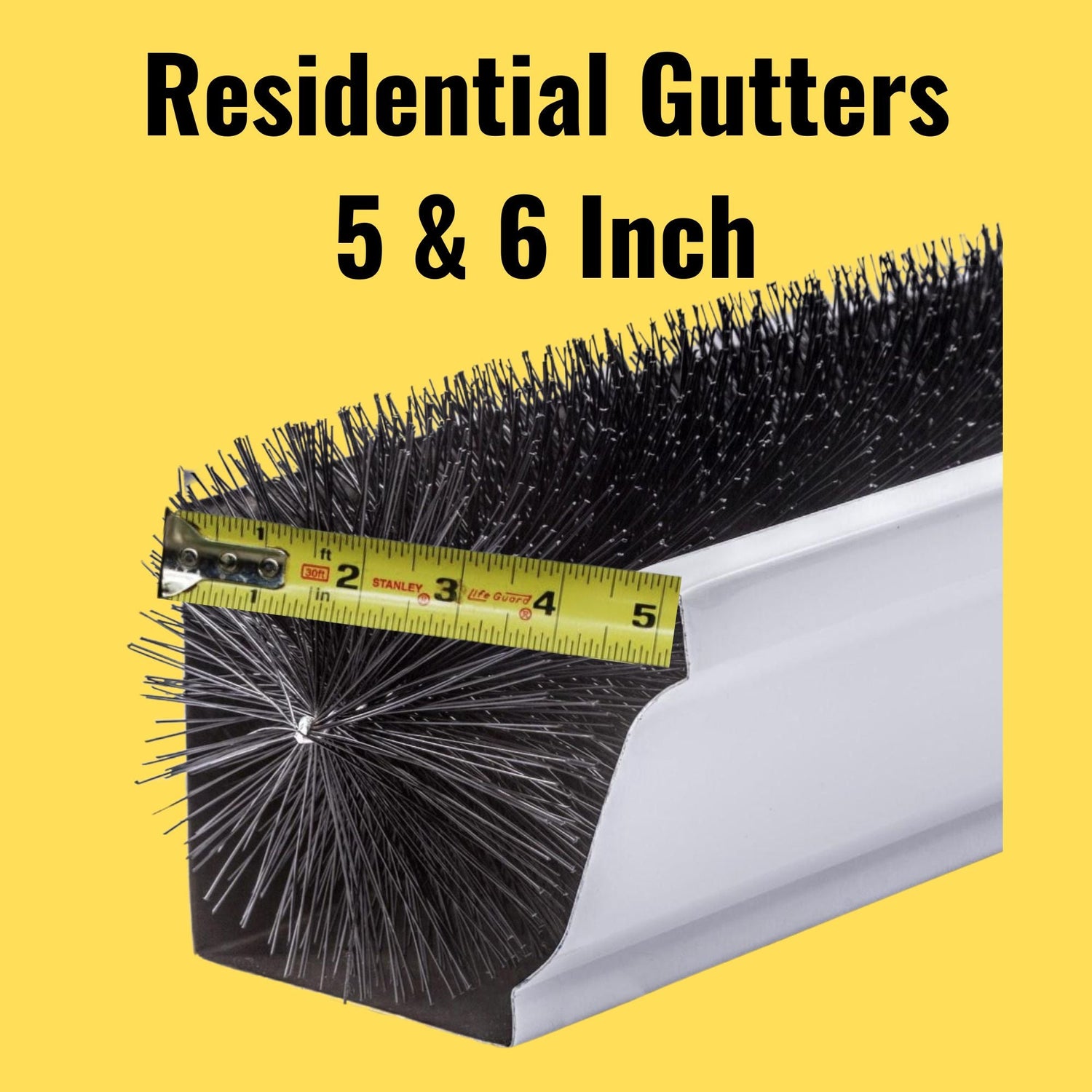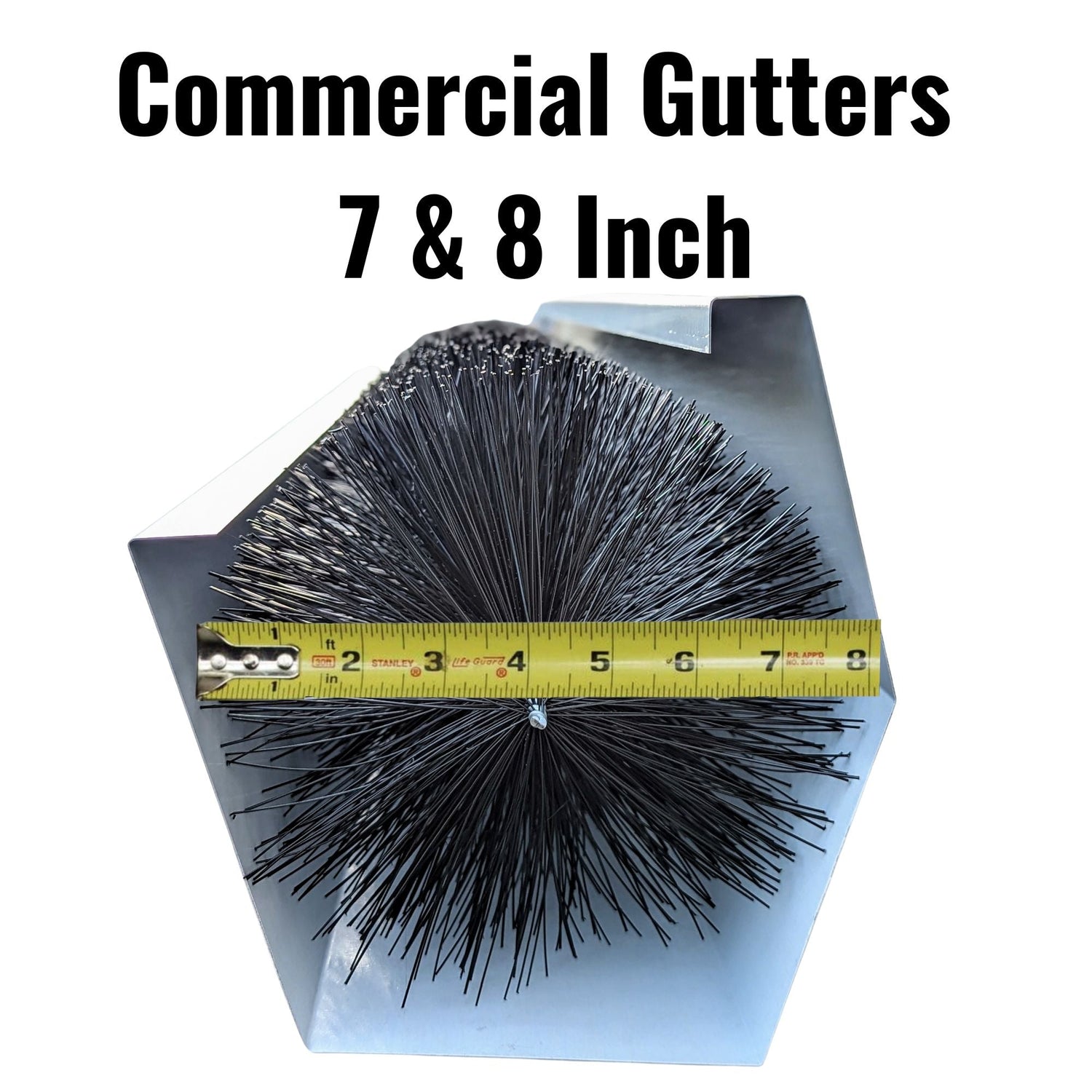Do Foam Gutter Guards Work ?
Are foam gutter guards any good? I have worked outdoors on roofs and gutters for 25 years, across various seasons in New England. Many people ask, "Do foam gutter guards work?" All gutter guards work to some degree in preventing gutter clogs, but all can also cause gutter overflow at some point. It's crucial to understand different gutter guard types and their characteristics that affect performance. Experienced contractors and homeowners know that all leaf guards require maintenance. While leaf guards and gutter clog protection products can keep gutters clog-free, eventually they all need upkeep. Without maintenance, the gutter guard itself often becomes the scapegoat for gutter overflow and drainage problems.
Foam Gutter Guards vs. Leaf Guards Comparison
Traditional Gutter Guard Products

Most traditional gutter clog protection products come in the form of gutter screens, microscreens, and covers. Gutter screens and covers restrict or decrease the gutter opening to keep debris out. However, they can also keep water out, causing it to overshoot the gutter and create a waterfall effect.
Gutter Foam Characteristics
Foam gutter guards, also known as gutter sponge or foam gutter guards, do not cover the gutter but are inserted inside it. They rest underneath the gutter crossbar hangers. Foam gutter guards fall under the category of "Gutter Guard Inserts." One popular brand of foam gutter guard in the USA is GutterStuff™.
What Are Foam Gutter Guards?
Foam gutter guards are pieces of open-cell foam shaped like a wedge that slides beneath the gutter’s horizontal hidden hangers. These hangers support the gutter and are usually spaced 18 to 24 inches apart. Installing each 4-foot piece of gutter foam requires cutting and trimming around each hanger to position the foam optimally. The open cells of the foam allow water to pass through while filtering out debris. Most people do not trim around the hangers, causing the foam to sit even lower in the gutter.
Installation Process
- Preparation: Clean the gutters thoroughly before installation.
- Fitting: Slide 4-foot lengths of gutter foam under the gutter hangers, trimming around each hanger as needed.
- Placement: Ensure the foam sits inside the gutter, ideally near the top edge to maximize effectiveness.
Foam Gutter Guard Performance and Uses
Foam gutter guards, such as GutterStuff and other sponge-type guards, act as filters within the gutter system. They utilize tight pores or open cells to allow rainwater to pass through while trapping debris. Here’s a detailed look at their performance and uses:
Debris Filtration
Foam gutter guards are designed to filter out debris as rainwater flows into the gutter. The open-cell foam structure captures even the smallest particles, such as leaves, pine needles, and shingle granules. This filtration is effective in preventing large debris from clogging the gutters.
Clogging Issues
Despite their effectiveness in debris filtration, the small pores of foam gutter guards tend to clog quickly with dirt, dust, and other fine particles. This can lead to several issues:
- Reduced Water Flow: As the foam pores fill up, water flow through the gutter guard is obstructed, causing rainwater to spill over the sides of the gutters.
- Frequent Maintenance: Due to their tendency to clog, foam gutter guards require regular cleaning and maintenance. Without frequent upkeep, the guards themselves can become a source of gutter overflow and drainage problems. The tight pores may be difficult to clean and renew.
Maintenance Challenges

Once foam gutter guards become clogged, it can be difficult or impossible to clean the fine particles and grime out of the foam. The process of removing and cleaning the foam can be labor-intensive and inconvenient, especially for multi-story homes. This frequent need for maintenance can be prohibitive for some homeowners; or they may just throw the foam in the garbage and start over.
Strategic Use Around Downspouts
Some homeowners find that foam gutter guards work well when used strategically around gutter outlet tubes and downspouts. By placing the foam guards in these areas, they can help prevent fine debris from clogging the downspouts. This technique involves:
- Targeted Placement: Surrounding the area immediately around the gutter outlet tube with foam gutter guard material.
- Effective Debris Control: This method helps keep downspouts clear of debris, preventing blockages that can lead to water overflow and damage.
Maintenance Implications
While this targeted use of foam gutter guards can be effective, it requires frequent trips up the ladder to remove and clean out the foam material. For homeowners with single-story homes, this level of maintenance might be manageable, however, for those with multi-story homes or limited mobility, the frequent maintenance required can be a significant drawback.
Considerations for Homeowners
For some homeowners, the benefits of foam gutter guards in preventing large debris from entering the gutter system are outweighed by the high maintenance requirements. It's important to weigh the pros and cons:
- Pros: Effective at filtering small debris, relatively inexpensive, easy to install.
- Cons: Prone to clogging, frequent maintenance required, difficult to clean thoroughly.
Benefits of Gutter Guard Inserts
1. Ease of Installation
Gutter guard inserts are generally faster and easier to install compared to traditional gutter guards like screens and covers. Traditional guards often require precise fitting, fastening, and sometimes professional installation. In contrast, gutter guard inserts do not require any tools or fasteners for installation, which makes them an ideal DIY solution. They fit snugly inside the gutter, cradled by the gutter itself, without the need for any additional hardware.
2. Quick Installation Process
Inserts like GutterStuff slide under the horizontal crossbar hidden gutter hangers and sit deep inside the gutter. The installation process involves:
- Preparation: Cleaning the gutters thoroughly to ensure there are no obstructions.
- Fitting: Sliding 4-foot lengths of gutter foam or other insert materials under the gutter hangers.
- Trimming: Cutting around each hanger as needed to ensure a proper fit.
- Placement: Ensuring the foam sits near the top edge of the gutter for optimal performance.
This method allows for quick and straightforward installation, significantly reducing the time and effort required compared to other types of gutter guards.
3. Maintenance and Upkeep
Gutter guard inserts are relatively low-maintenance. While all gutter guards require some degree of upkeep, inserts are easier to remove and clean compared to screens and covers. This ease of maintenance ensures that homeowners can quickly address any blockages or debris accumulation without the need for specialized tools or professional help.
4. Unique Feature of GutterBrush
GutterBrush stands out among gutter guard inserts due to its innovative design that includes flexible bristles. Unlike other inserts that lie flat inside the gutter, GutterBrush’s bristles create a raised profile above the gutter edge. This unique feature provides several benefits:
5. Wind Purge
The raised bristles of GutterBrush are unique, and allow the wind to blow off debris that accumulates on top. Traditional flat inserts can become clogged with leaves and debris, which can block water flow and cause overflow issues. However, the bristles on GutterBrush extend above the gutter edge, positioning the debris in a way that it is more likely to be blown away by the wind. This wind purge feature helps keep the gutter system clear with minimal maintenance. Only GutterBrush, can have a raised profile after sliding under the gutter bracket crossbar. It's the flexible bristles that spring back up and create the raised profile.
6. Enhanced Water Flow
GutterBrush’s bristles also aid in enhancing water flow into the gutter. The bristles act as a guide, drawing water down into the center of the gutter while preventing large debris from entering. This ensures that rainwater can flow freely through the gutter system, reducing the risk of overflow and water damage. The bristles' ability to channel water efficiently makes GutterBrush highly effective in managing heavy rainfall and preventing clogs.
7. Flexibility and Durability
GutterBrush is designed to be flexible and durable. The bristles are made from high-quality materials that can withstand various weather conditions and sunshine without deteriorating. This durability ensures that GutterBrush remains effective over the long term, providing consistent protection for your gutters. The flexibility of the bristles allows them to spring back into place after installation, maintaining their raised profile and effectiveness in debris control and water flow management.
8. Versatile Fit
GutterBrush is designed to fit seamlessly into any standard gutter system. Its flexibility allows it to be easily installed under the gutter crossbar hangers, and the bristles adjust to the gutter's width, ensuring a snug fit. This versatility makes GutterBrush compatible with a wide range of gutter types and sizes, providing an efficient solution for various gutter protection needs. Gutterbrush is self fitting.
9. Cost-Effective Solution
Gutter guard inserts, especially DIY options like GutterStuff and GutterBrush, are cost-effective compared to professionally installed gutter guards. The materials are relatively inexpensive, and the ease of installation eliminates the need for costly professional services. This makes gutter guard inserts an attractive option for budget-conscious DIY homeowners.
10. UV Protection
Quality gutter guard inserts, such as GutterBrush, offer UV protection to withstand prolonged exposure to the sun. This UV resistance prevents the material from degrading, shrinking, or becoming brittle over time, ensuring long-lasting performance and protection for your gutters.
11. Reduced Maintenance Frequency
While all gutter guards require some maintenance, the design of gutter guard inserts like GutterBrush significantly reduces the frequency of required gutter cleanings. The wind purge feature and enhanced water flow capability mean that debris is less likely to accumulate and cause blockages, allowing for longer intervals between maintenance sessions.
12. Environmental Impact
Gutter guard inserts can also contribute positively to the environment by reducing the amount of debris that enters the gutter system and is washed away. This helps to prevent blockages in stormwater drainage systems and reduces the risk of water pollution caused by organic debris and contaminants.
Other Gutter Guard Inserts
There are various gutter guard inserts available, such as slinky-type devices and perforated pipes. However, GutterBrush is unique due to its raised profile, which aids in debris control and improves water flow into the gutter.
Durability and UV Protection
Foam gutter guards often claim to be UV protected, but inferior products may not withstand sun exposure and can shrink or curl over time. GutterBrush is UV protected, lasts over 15 years, and is made in the USA, offering a high-quality, long-lasting solution with a 10-year material warranty.
Leaf Guard Costs Per Foot
Foam Gutter Guards
Foam gutter guards are relatively inexpensive due to their lightweight and low-mass design. Here are some key points regarding their cost and installation:
- Material Cost: Foam gutter guards themselves do not possess much weight or mass, making the material costs low. This makes them an attractive option for budget-conscious homeowners.
- DIY Installation: Homeowners opting for a DIY approach can save on labor costs. However, the installation process involves positioning the foam properly, trimming around crossbar hangers, and ensuring a good fit. This can be labor-intensive and time-consuming.
- Maintenance Considerations: Given that foam gutter guards tend to clog and require frequent maintenance, the initial low cost can be offset by the ongoing effort needed to clean and reposition the guards. This makes them less appealing for those looking for a low-maintenance solution.
- Contractor Installation: Foam gutter guards are typically not preferred by contractors due to the time-consuming process of cutting and fitting the foam around hangers. As a result, professional installation is uncommon and usually not cost-effective.
GutterBrush

GutterBrush offers a more efficient and cost-effective alternative, whether installed by homeowners or professionals:
- DIY Installation: GutterBrush can be installed by homeowners at a cost of $2.50 to $3.50 per foot, including shipping. The bristle design allows for easy placement without the need for trimming or fasteners.
- Contractor Installation: Professionals typically charge between $5.00 and $7.00 per foot for installing GutterBrush, which includes both materials and labor. The straightforward installation process, which involves sliding the brush under the gutter hangers, is quick and efficient. Costs may vary by geography.
- Cost Efficiency: The ease of installation translates to significant labor savings. Since labor is the highest cost component in most installation jobs, the quick installation time for GutterBrush makes it a more economical option compared to other systems.
Comparison with Other Gutter Guards
Other gutter guards, including screens, covers, helmets, and micromesh systems, often come with higher installation costs:
- Professional Installation: These systems typically require professional installation due to their complexity. Costs range from $20 to $35 per foot, reflecting the extensive labor and precision fitting required.
- Labor Costs: The need for precise fitting and fastening increases labor time and costs. In contrast, GutterBrush’s self-fitting design significantly reduces installation time and associated costs.
Summary of Costs
- Foam Gutter Guards: Material cost is low, but high maintenance and labor-intensive installation can increase overall costs.
- GutterBrush (DIY): $2.50 to $3.50 per foot, easy to install with minimal tools and no need for trimming.
- GutterBrush (Contractor): $5.00 to $7.00 per foot, quick and efficient installation with significant labor savings.
- Other Gutter Guards: $20 to $35 per foot, high labor costs due to complexity and precision requirements.
In conclusion, while foam gutter guards might seem cost-effective initially, their maintenance needs and labor-intensive installation can make them less desirable. GutterBrush provides a more practical and cost-efficient solution with easier installation and lower maintenance requirements.
Foam Gutter Guards FAQs
Do Foam Gutter Guards Work Effectively?
Foam gutter guards are effective in filtering out debris due to their open-cell structure. However, they tend to clog quickly with small particles like dirt and shingle granules, which can obstruct water flow and require frequent maintenance.
How Often Should I Clean Foam Gutter Guards?
Foam gutter guards need regular cleaning, typically several times a year, depending on the amount of debris in your area. Without frequent upkeep, the guards can become clogged and cause gutter water overflow.
Can I Install Foam Gutter Guards Myself?
Yes, foam gutter guards are designed for DIY installation. However, the process can be labor-intensive and tricky as it involves positioning the foam properly, trimming around gutter hangers, and ensuring a snug fit.
What Are the Costs Associated with Foam Gutter Guards?
Foam gutter guards are relatively inexpensive in terms of material cost, making them an attractive option for budget-conscious homeowners. However, the labor-intensive installation and frequent maintenance required can increase the overall costs.
Why Should I Consider GutterBrush Over Foam Gutter Guards?
GutterBrush offers several advantages over foam gutter guards, including easier installation, lower maintenance, and a unique raised bristle profile that aids in wind purging debris and enhancing water flow. While the initial cost may be higher, GutterBrush provides significant long-term savings and durability.
Key Takeaways
- Foam Gutter Guards Require Frequent Maintenance: While foam gutter guards effectively filter small debris, their small pores can clog quickly with dirt, dust, and shingle granules, necessitating regular cleaning to prevent water overflow.
- DIY Installation of Foam Gutter Guards Is Labor-Intensive: Although foam gutter guards are inexpensive, the DIY installation process can be time-consuming and labor-intensive, involving precise positioning and trimming around gutter hangers.
- GutterBrush Offers Ease of Installation: GutterBrush can be installed easily without the need for trimming or fasteners, making it a cost-effective option for both DIY enthusiasts and professional installations.
- Cost Comparison of Gutter Guards: Foam gutter guards are cheaper in material cost but require high maintenance and labor. In contrast, GutterBrush, while slightly more expensive, provides significant labor savings and long-term durability.
- GutterBrush's Unique Raised Profile: GutterBrush features flexible bristles that create a raised profile, which aids in wind purging debris and enhancing water flow, reducing the frequency of maintenance compared to other gutter guard types.
About GutterBrush
At GutterBrush, we offer innovative gutter protection systems for both Residential and Commercial properties. Our unique brush technology, recognized by Home & Garden TV, The Family Handyman, At Home with Gary Sullivan, and Home Depot, ensures your gutters remain clog free while filtering rainwater, reducing the need to frequently buy gutter guards.
A family-owned company serving American homesteads since 2004, we're proud to have over 1200 5-star reviews, supported by a 10-year material warranty and a 365-day refund policy.




